Few garden features feel as welcoming as a sinuous path that draws the eye onward, softens hard lines, and encourages leisurely discovery. A curved walkway naturally slows foot traffic, adds visual intrigue, and helps a landscape feel larger by revealing views in stages. Whether you lean rustic with loose gravel or crisp with modern concrete, the gentle sweep of a curved route can connect entries, patios, and focal points while improving drainage and protecting turf. Thoughtful material choices, planting pockets, lighting, and grade changes turn that curve into a multisensory journey and a practical spine for your outdoor living plans. Explore these twenty ideas for inspiration that marries beauty with everyday function.
1. Flowing Flagstone Curved Walkway for Organic Charm

A curving flagstone walkway provides the timeless look of quarried stone while flexing easily around borders and existing trees. Opt for irregular slabs set in soft joint sand to accentuate each arc; the rough edges read like natural outcrops and invite moss to colonize the gaps. Because flagstone offers excellent traction when wet, it’s a safe choice for shaded garden routes. Lay the stones on a compacted 4-inch crushed-rock base to thwart frost heave, then sweep polymeric sand between joints to lock them tight and discourage weeds. A low ground-cover such as creeping thyme can spill over the sides, blending hardscape into planting for storybook charm. Reddit YouTube
2. Running-Bond Paver Curved Walkway That Minimizes Cuts
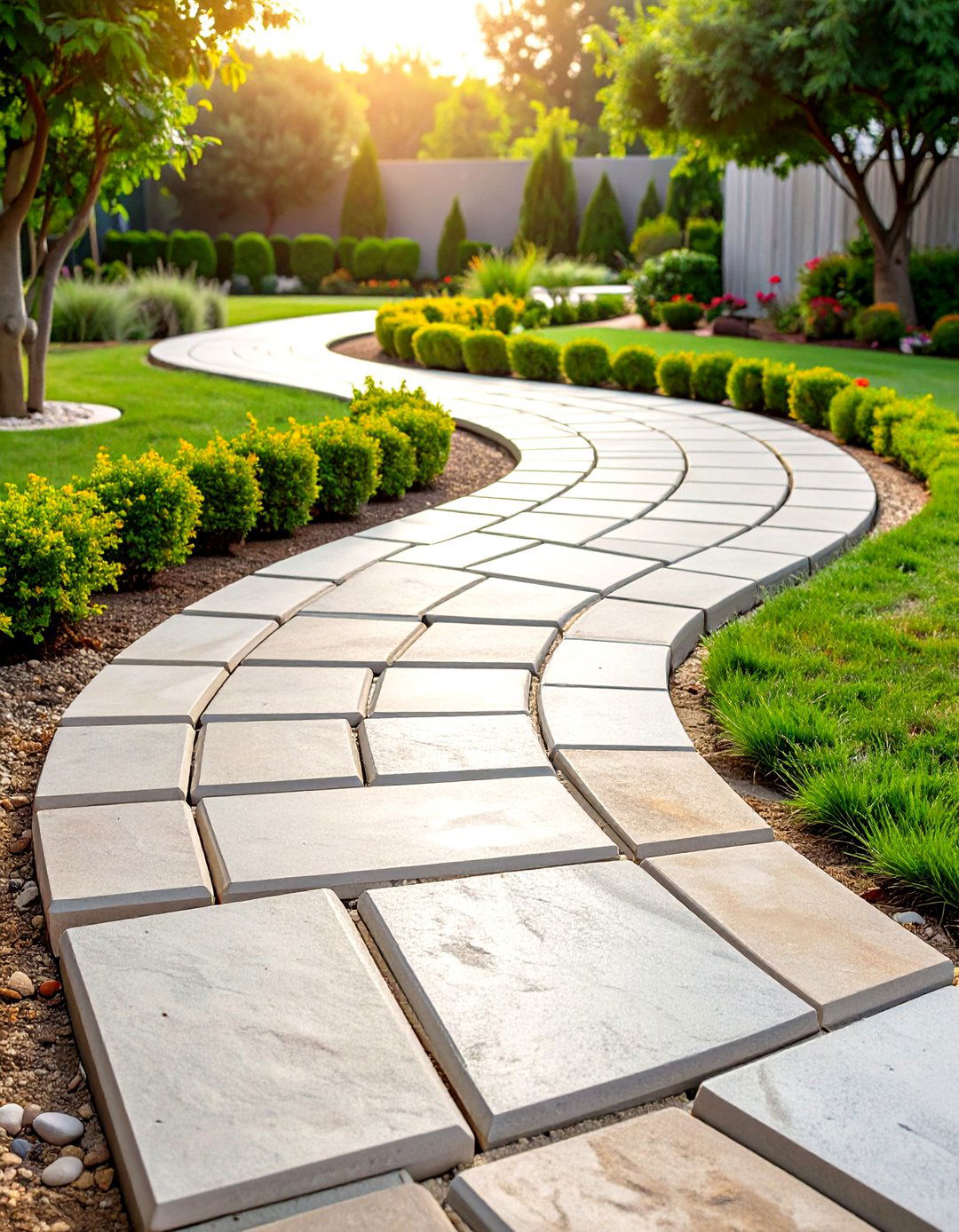
When you want a crisp, contemporary curve but dread endless saw work, laying rectangular pavers in a running-bond pattern lets courses fan gracefully without constant trimming. Start your curved walkway at its widest radius, letting perpendicular joints form subtle wedges that gradually steer the path. This technique works especially well with tumbled-edge concrete pavers whose muted tones mimic aged brick. Finish edges with flexible plastic restraint spikes, then topdress joints with fine sand to keep lines tidy. The result is an elegantly arching ribbon that looks professionally sculpted yet installs quickly for DIYers willing to rent a plate compactor for afternoon prep. Western Interlock Gerrior Masonry
3. Mosaic Mixed-Material Curved Walkway for Playful Texture
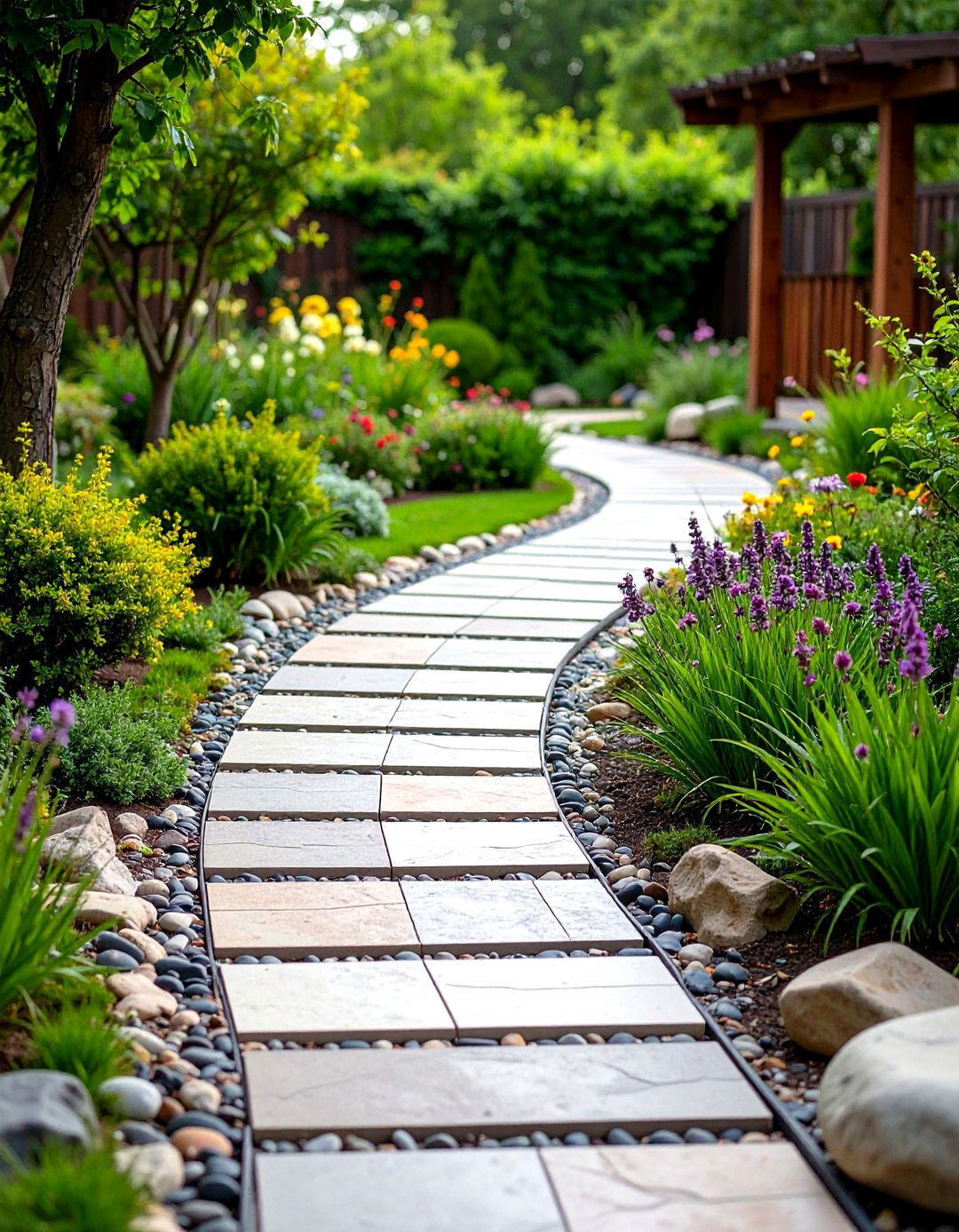
For homeowners who crave artistic flair, a curved walkway that alternates river stone, recycled brick slices, and porcelain tile off-cuts sparks conversation at every turn. Dry-fit a meandering outline first, then assign zones where each medium dominates, repeating patterns to avoid chaos. Contrasting textures underfoot feel engaging—smooth pebbles massage bare soles while fired brick offers warmth—and the blended surfaces reduce slippery spots in rain. Edge the route with steel strip to contain shifting aggregates without visually upstaging the mosaic. Seal porous sections yearly to keep colors vibrant and frost-resistant. The patchwork approach also helps repurpose leftovers, saving money and landfill space. Better Homes & Gardens
4. Crushed-Gravel Meander for Budget-Friendly Drainage
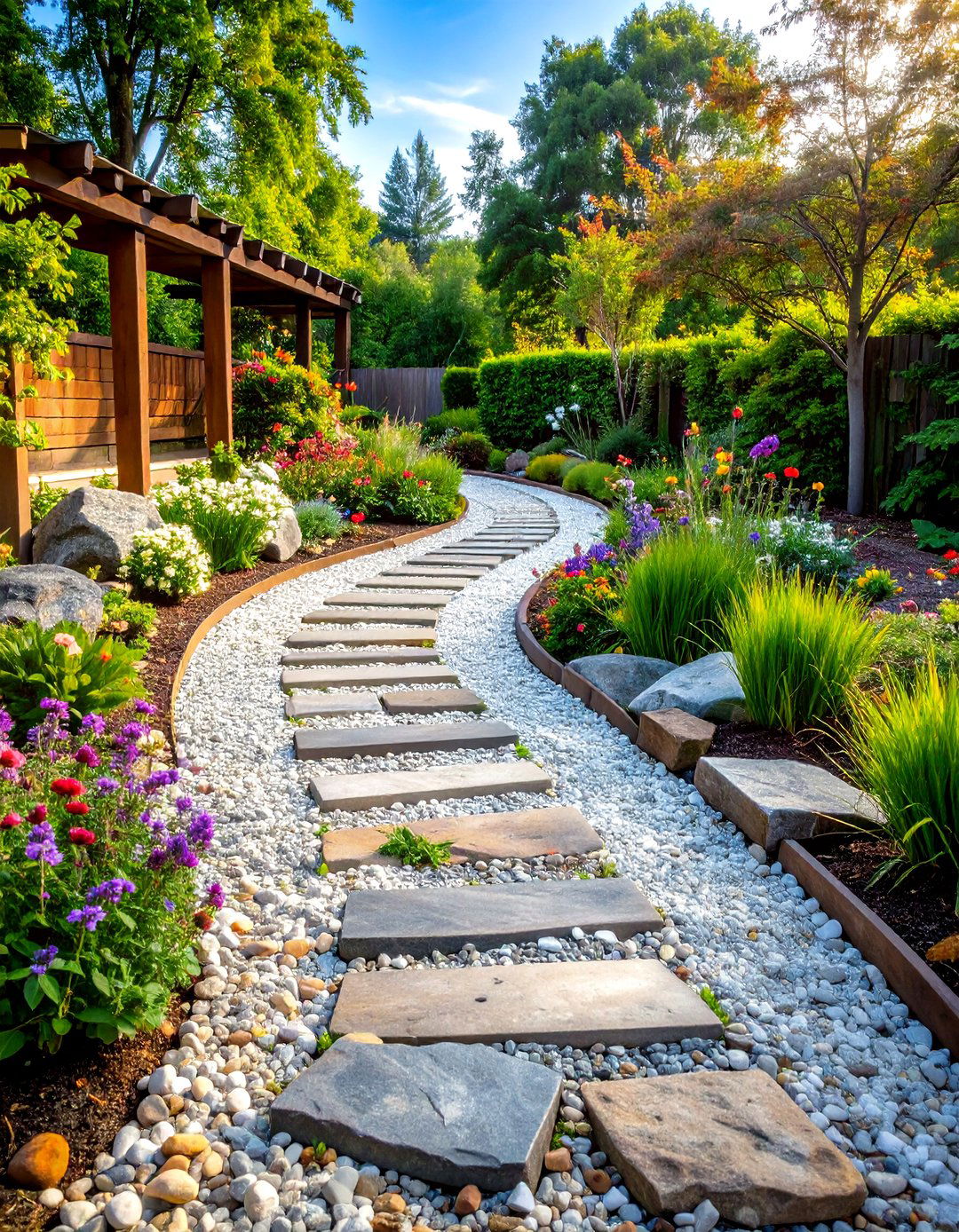
Gravel’s affordability and permeability make it perfect for a relaxed curved walkway that doubles as a French drain. Excavate six inches, line with geotextile, and backfill three inches of road base topped by two inches of ¼-minus crushed granite for a stabile, compactible surface. The tiny angular particles interlock, resisting rutting better than round pea gravel. Frame edges with weathered timber or Cor-Ten steel to hold stones during heavy downpours. Because water seeps through rather than pooling, the path stays usable after storms and eases pressure on nearby planting beds. Refresh the top layer every few years to maintain a tidy cream-gray finish. Reddit
5. Brick-and-Grass Ribbon Curved Walkway for Historic Warmth
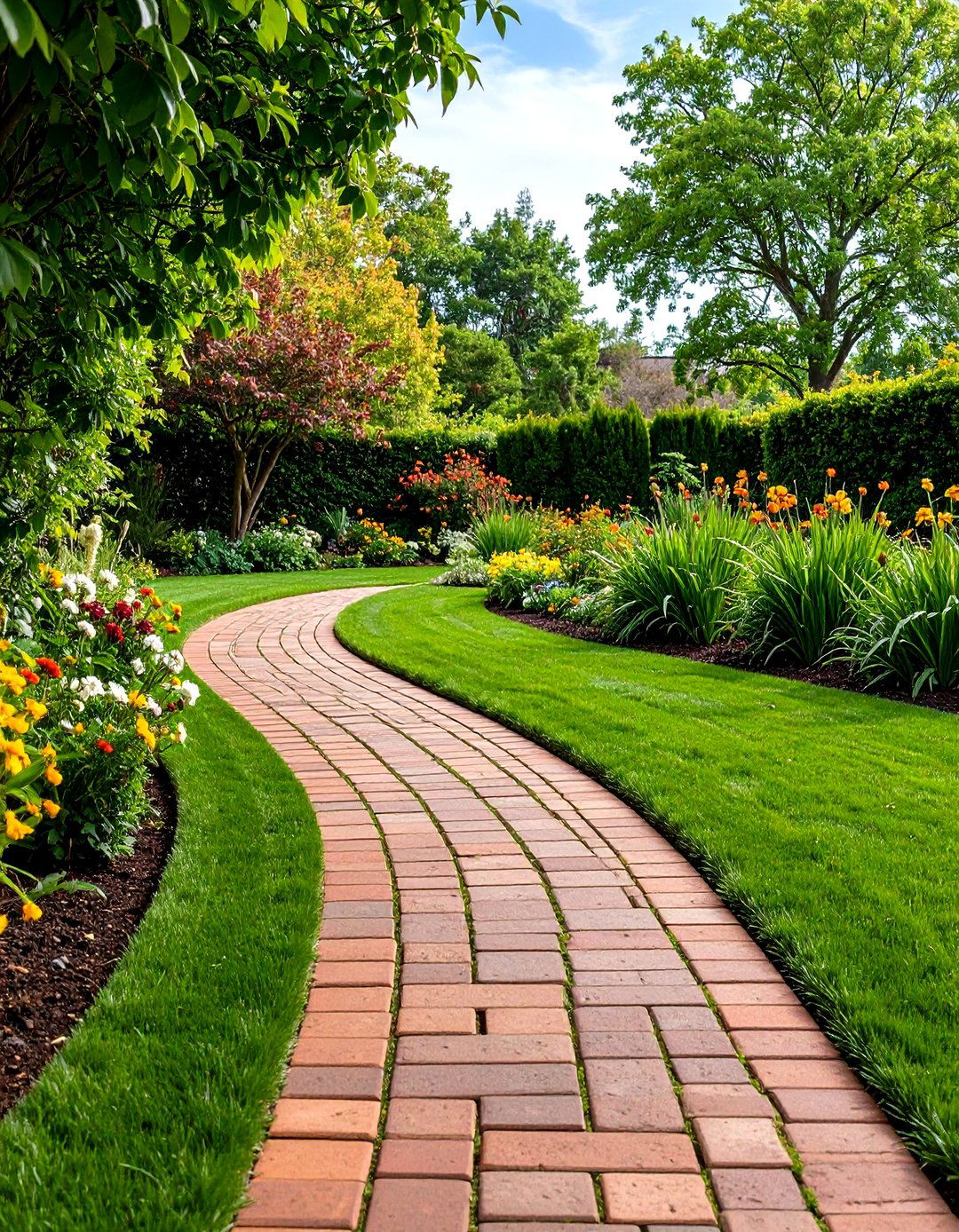
A traditional red-brick curving walkway gains instant softness by setting bricks two abreast with widened joints seeded in dwarf mondo grass. The living mortar cools summer surfaces and filters runoff before it reaches beds. Use reclaimed clay brick for authentic patina, staggering courses so the path flexes gently around foundation shrubs. Compact a sand-and-granite fines bed to keep bricks flat, then tuck soil plugs between them and water daily until grass knits. Over time, occasional mowing flush with the pavers keeps the ribbon tidy while autumn leaf litter decomposes neatly within the vegetation. The subtle green grout makes even tight spaces feel roomy. Better Homes & Gardens
6. Serpentine Stepping-Stone Walkway That Floats Through Mulch
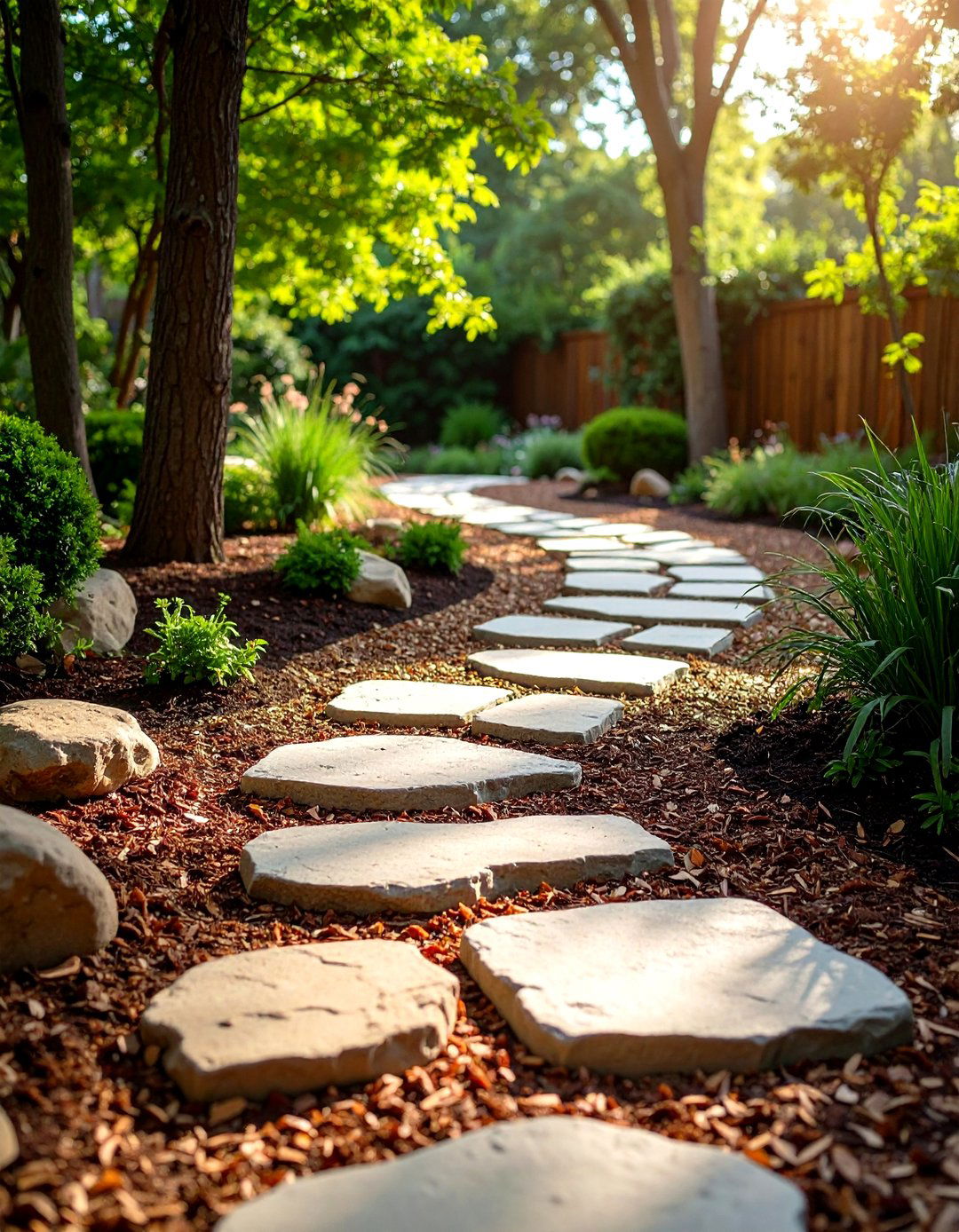
If you favor minimal hardscape, scatter oversized irregular stepping stones two shoe-lengths apart to imply the arc of a curved walkway without laying a solid slab. Nest the flagstones in three inches of bark mulch so tops sit level with surrounding soil, inviting rain to percolate. Vary spacing slightly to slow pace and encourage contemplation—a hallmark of Japanese-inspired tea paths. For night safety, tuck low-voltage puck lights between stones, letting warm beams graze textures without revealing hardware. Because less surface is impermeable, root zones of adjacent perennials remain undisturbed, and relocating stones later is painless when garden layouts change.
7. Timber-Plank Boardwalk Curve Over Damp Ground
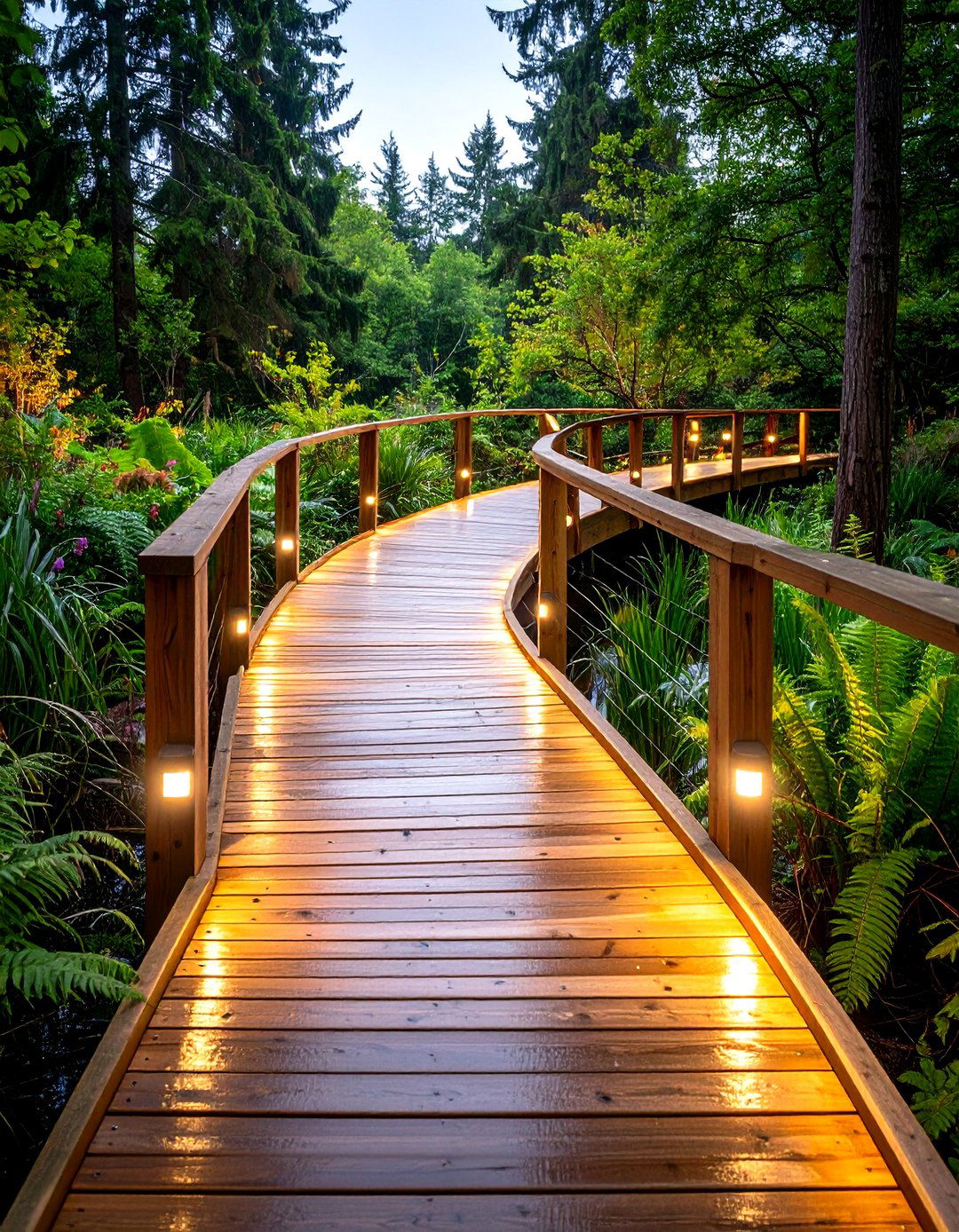
A raised cedar boardwalk sweeps visitors above soggy subsoil where typical masonry would sink. Install helical ground screws every six feet along the curve, bolt pressure-treated joists, and top with 2×6 planks set ¼-inch apart for drainage. The elevated curved walkway hovers lightly over ferns and reeds, preserving fragile ecologies below. Use hidden-fastener clips for a clean face, then treat surfaces yearly with eco-friendly oil to resist rot. LED strip lights mounted under side rails outline the arc at dusk, creating an inviting glow without glare. This approach turns marshy problem spots into highlight features rather than detours. Better Homes & Gardens
8. Herb-Edged Curved Walkway Perfumed for the Senses
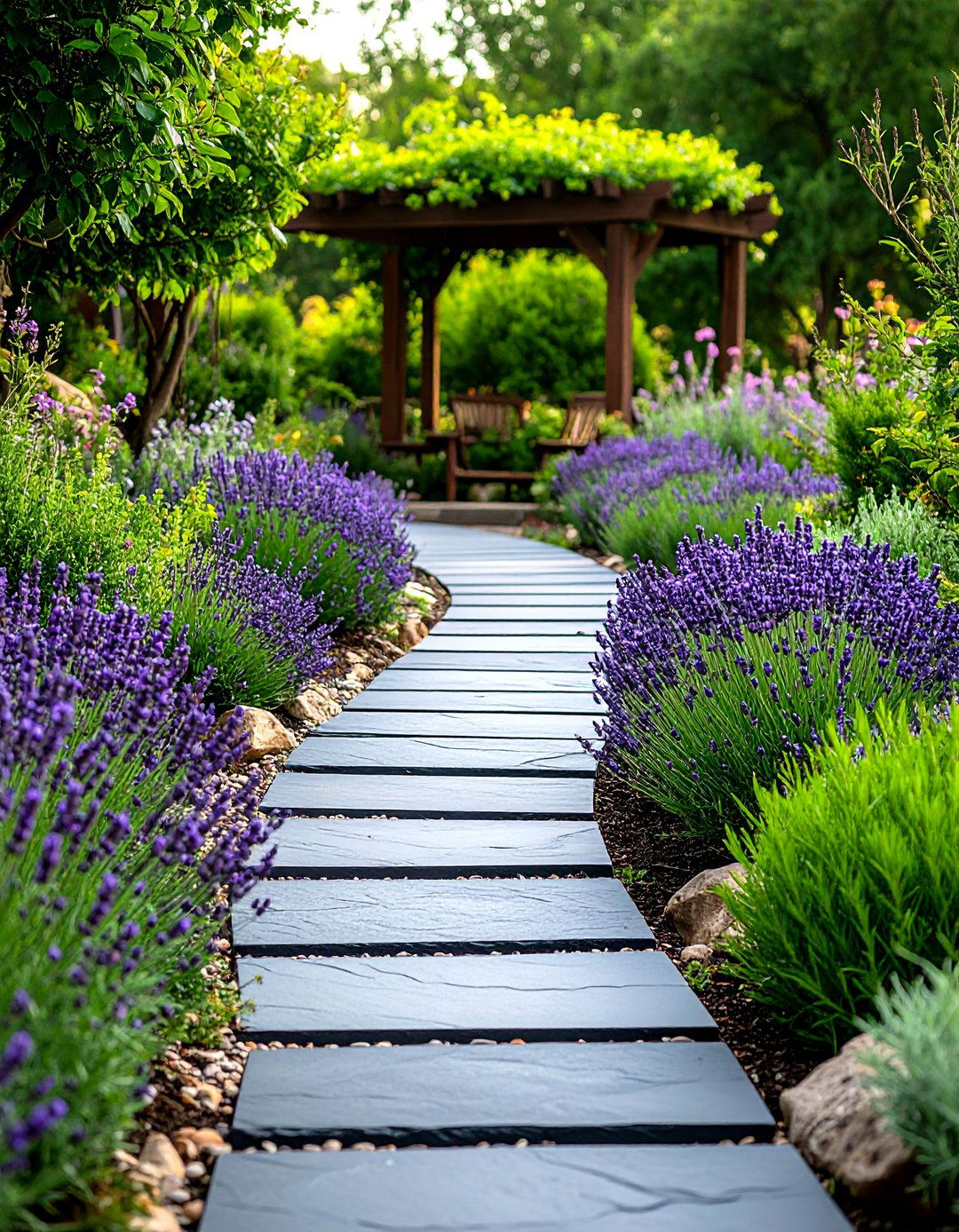
Lining a gentle curve with waist-high lavender, rosemary, and sage transforms a simple walkway into an aromatic corridor that brushes visitors’ legs and releases essential oils under sun. Choose heat-tolerant Mediterranean herbs for south-facing paths; their silvery foliage contrasts beautifully with charcoal slate or pale limestone paving. Space plants densely so they knit into a low hedge, pruning annually after bloom to maintain clean borders that don’t encroach on foot traffic. Drip irrigation hidden beneath mulch keeps roots hydrated without wetting leaves, preventing fungal spots. The scented journey calms nerves and supplies fresh clippings for kitchen experiments just steps from the door.
9. LED-Lit Gentle S-Curve for Nighttime Drama

Integrating hardscape-grade LED pavers within a sweeping S-shaped walkway elevates evening curb appeal and enhances safety. Alternate every third stone with a factory-sealed light unit wired to a dawn-to-dusk transformer, ensuring consistent spacing highlights the sinuous geometry. Low-glare, warm-white diodes cast subtle pools that guide footsteps without overwhelming stargazing. For retrofit projects, surface-mount aluminum channel lights along edging strips to avoid re-laying stones. Pair illumination with dark-sky-friendly fixtures on nearby plantings to layer light at knee height and canopy height, revealing textures in three dimensions. Energy costs stay minimal—most modern paver lights draw less than one watt apiece. Lost At E Minor
10. Pergola-Covered Curved Walkway for Dappled Shade
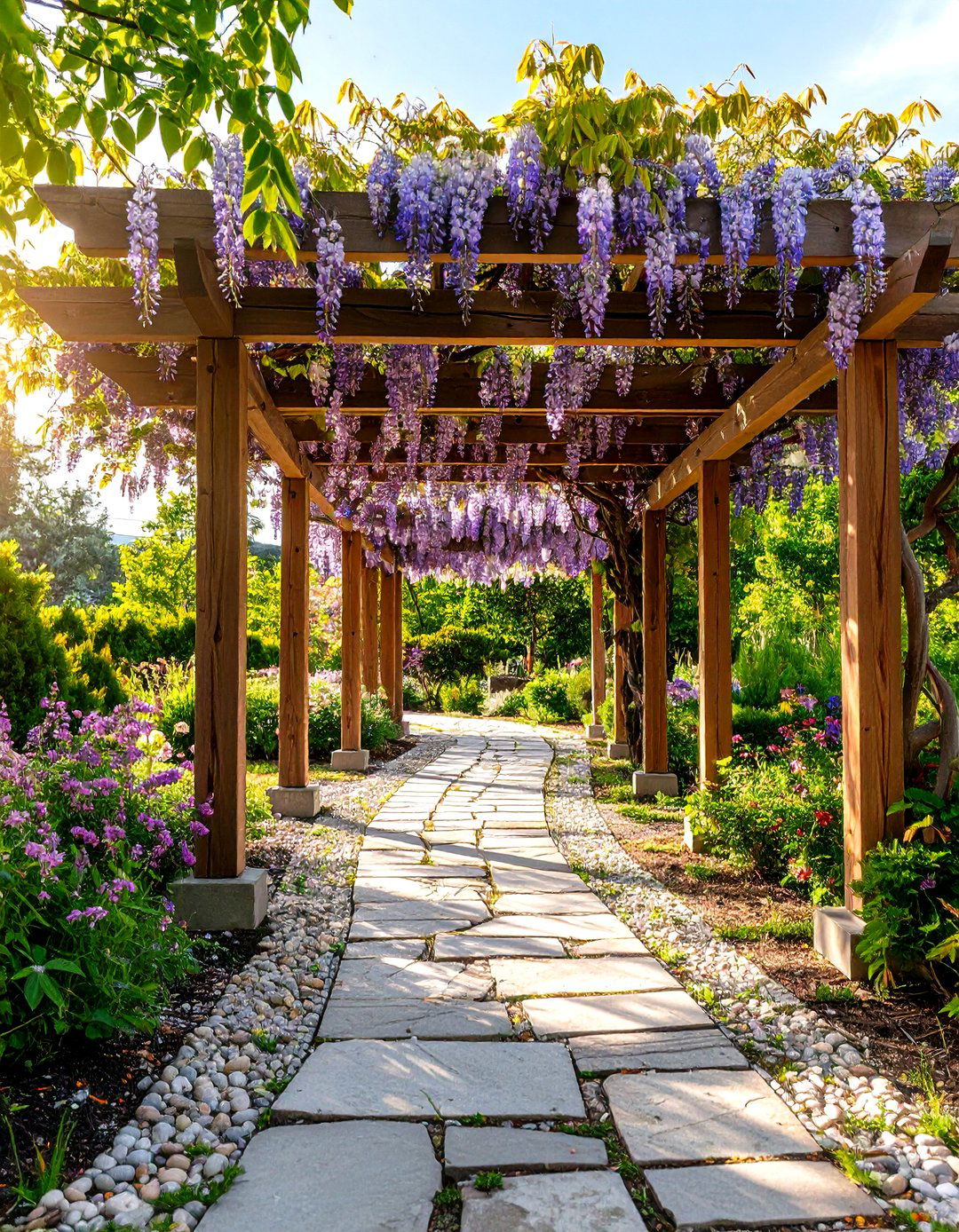
Anchoring a cedar pergola over a long curving walkway creates an idyllic tunnel dripping with wisteria or climbing roses. Match post spacing to the bend, using shorter bays on tighter radii to keep rafters square. Set footings below frost depth and powder-coat steel bracket hardware for longevity. As vines mature, dappled shade cools stone surfaces by up to 15 °F on summer afternoons, protecting pet paws and reducing reflected heat at adjacent windows. String café bulbs beneath rafters for a festive glow after dusk. The living structure delivers vertical interest and frames photo-ready views for weddings or garden parties. Pinterest Homes & Gardens
11. Dry-Creek-Bed Curved Walkway That Doubles as Swale
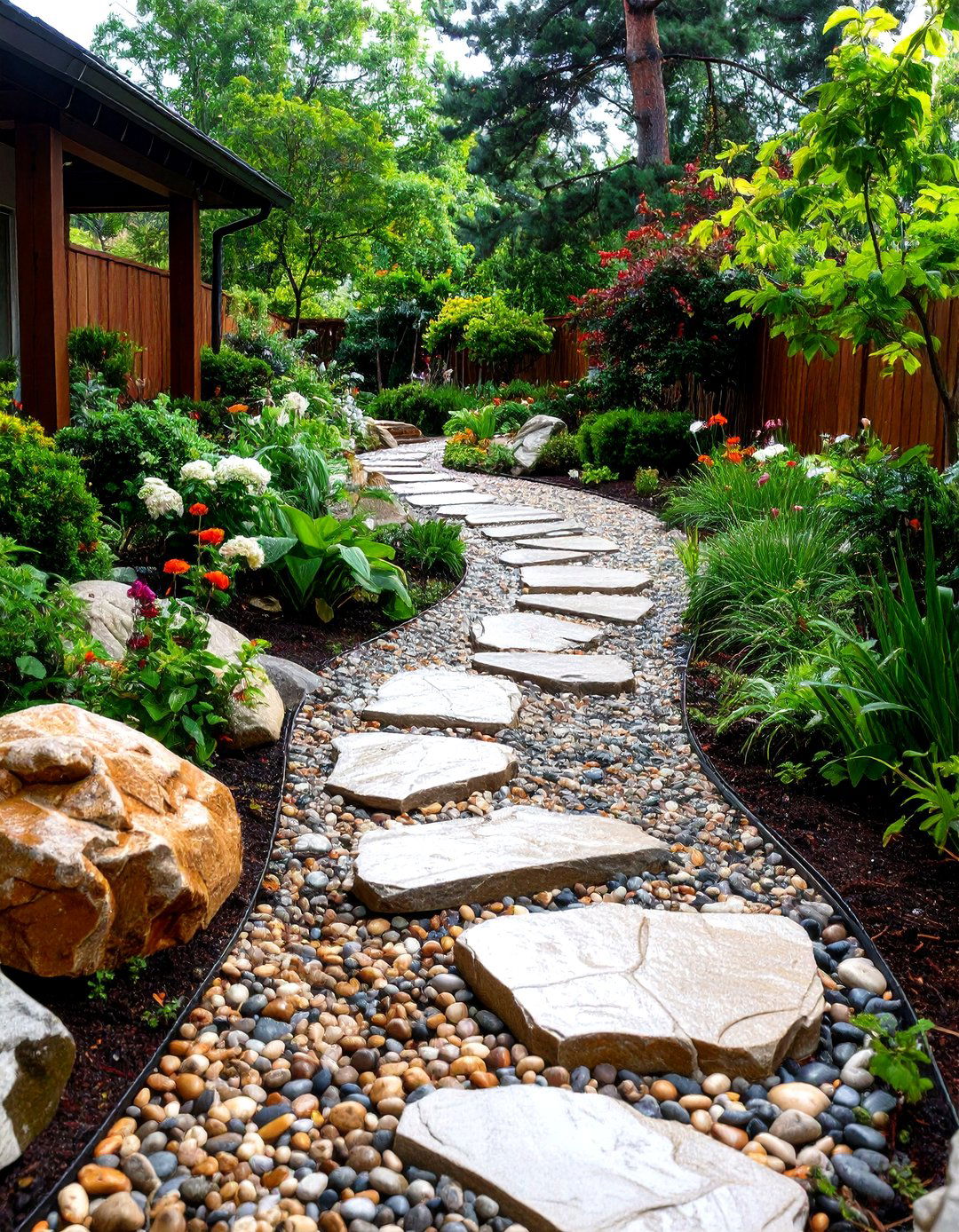
In rainfall-prone climates, convert a curved walkway into a functional dry creek bed by swapping pavers for rounded river rock laid in a shallow trench. Shape the bed with subtle berms on either side so stormwater funnels along the path toward a rain-garden basin. Add flat flagstone “steppers” centered every two feet to keep feet dry between storms. During downpours, water animates the stones, adding musical burble before soaking away. Plant moisture-loving iris and sedge on banks to stitch hardscape with surrounding beds and filter runoff. This hybrid solves drainage woes while retaining whimsical meanders through the landscape. Better Homes & Gardens
12. Minimalist Concrete Sweep for Modern Homes

Homeowners craving sleek aesthetics can cast a monolithic, brushed-finish concrete walkway that arcs gently from driveway to door with no visible joints. Formwork built from flexible hardboard stakes to desired radius holds the pour, while integral charcoal pigment deepens tone and hides surface dust. Score shallow expansion grooves every six feet to guide cracks, and bevel edges for crisp shadow lines. Pair the path with architectural grasses and corten planters for a gallery-like entry sequence. A heated cable embedded before pouring prevents winter ice buildup in cold regions, offering year-round safety without salt damage. The uninterrupted ribbon feels utterly contemporary. Gerrior Masonry
13. Japanese-Inspired Curved Stone Walkway with Lanterns
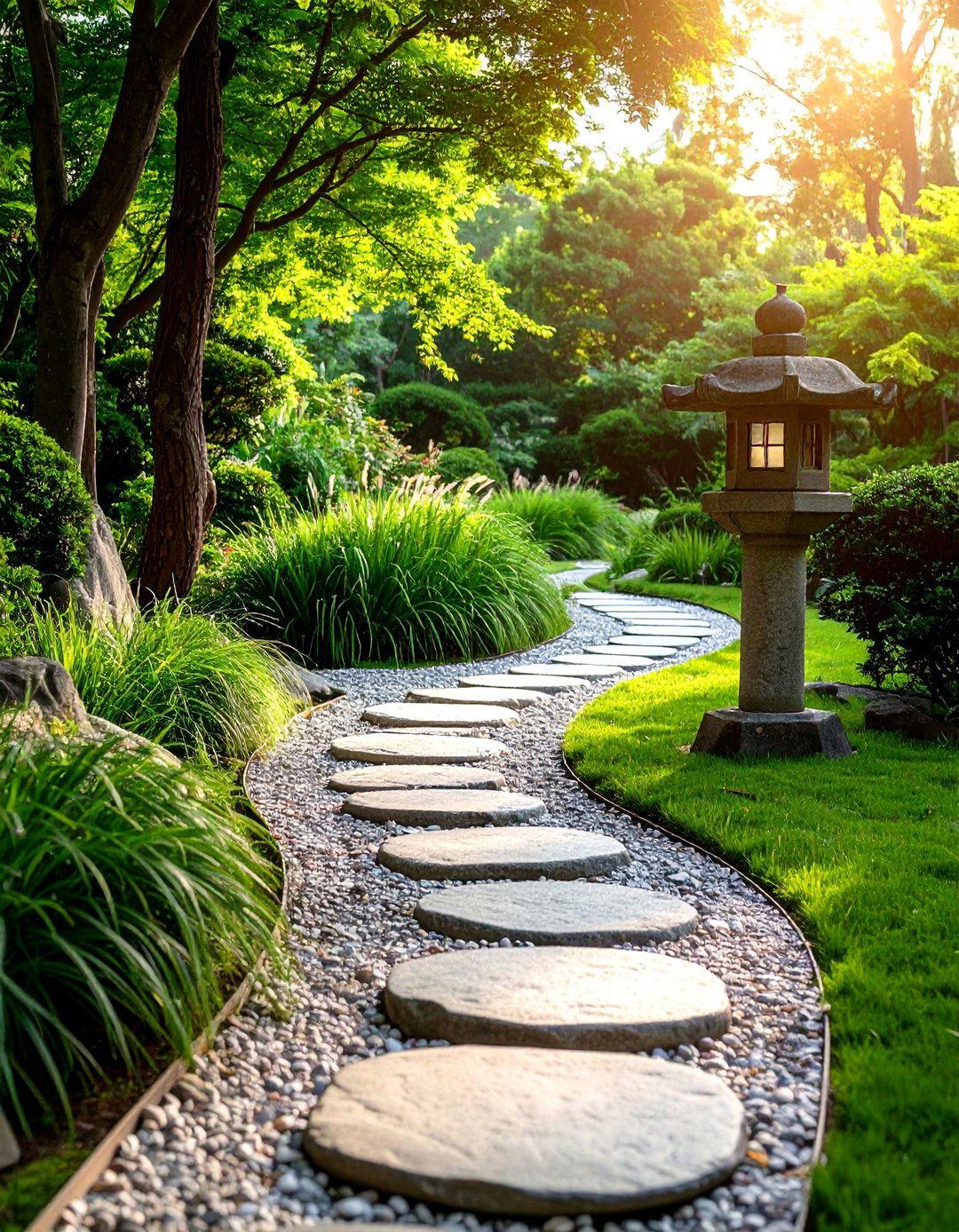
Borrowing from roji (tea-garden paths), a curved walkway composed of oval granite setts spaced unevenly encourages a slowed, mindful gait. Place stones so toes land slightly offset each step, fostering balance and alertness. Nestle slender clumps of Hakone grass along edges and position a weathered stone lantern at the midpoint to punctuate the journey. Use dark river pebble mulch between setts to evoke water, raking it into concentric ripples for meditative upkeep. This subtle choreography transforms a short side yard into a tranquil passage that prepares guests for calm before entering the home. Better Homes & Gardens
14. Cottage-Garden Bloom-Framed Walkway for Storybook Appeal
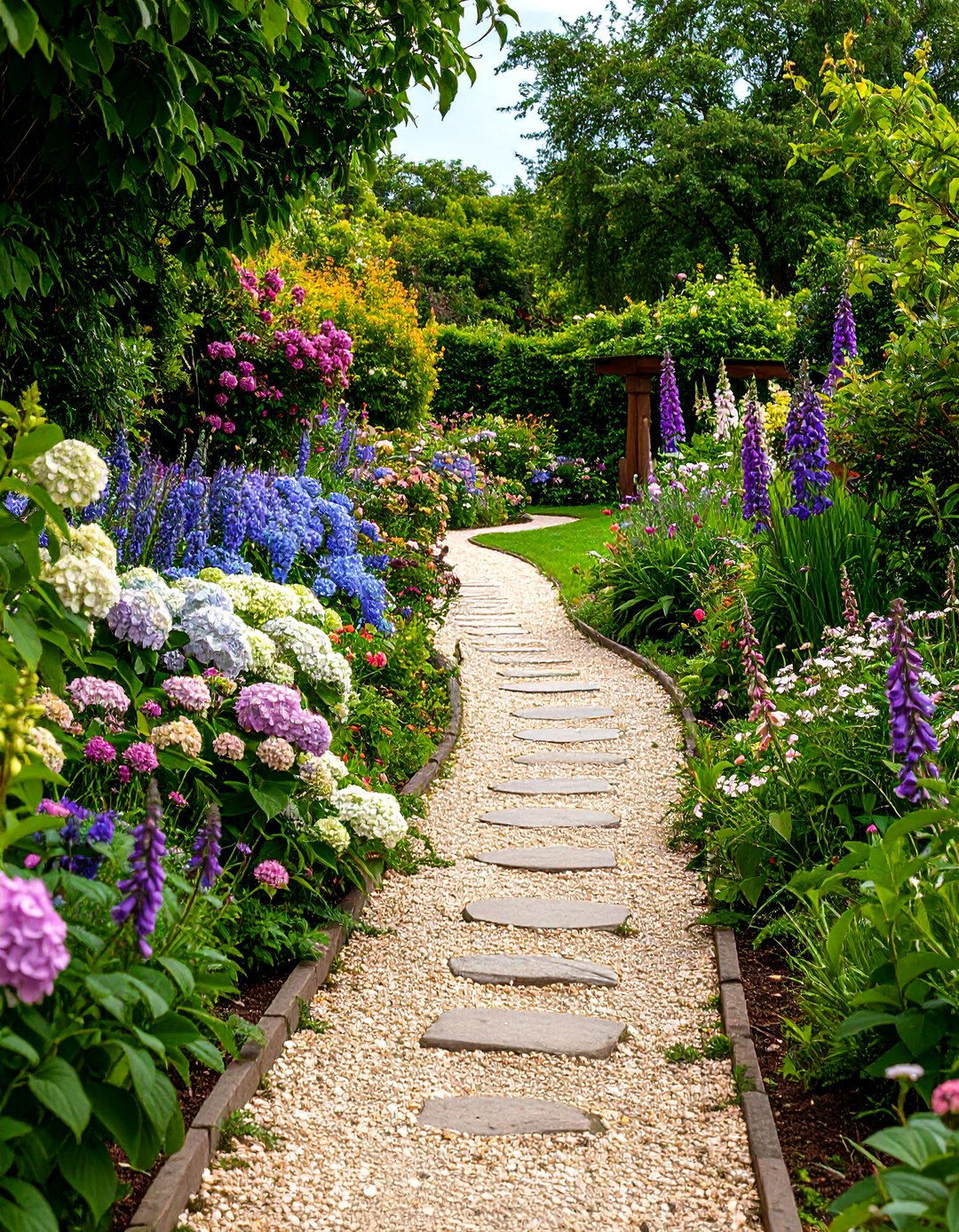
Nothing says romance like a curved walkway bordered with frothy hydrangeas, foxgloves, and arching delphiniums. Choose a pale gravel or antique brick surface so pastel petals stand out in photographs. Vary bed widths along the curve; deep pockets allow tall spires to lean into the path, creating immersive enclosure, while narrow sections open sudden glimpses to lawn. Interplant with spring bulbs for succession color and scatter self-seeding annuals to keep maintenance light. A discreet irrigation dripline hidden beneath leaf mulch supports thirsty blooms without overspray, ensuring travel along the path stays mud-free even after watering cycles. Homes & Gardens
15. Retaining-Wall Integrated Curved Walkway on a Slope

On sloping lots, carve a terraced curved walkway by pairing segmental block retaining walls with an inner path that hugs the grade. Step the wall courses downward, backfilling each terrace with compacted gravel before laying pavers flush with adjacent capstones. This strategy provides level footing, prevents erosion, and reveals panoramic views incrementally as elevation changes. Incorporate built-in planters within wider wall sections to soften masonry with cascading blooms or edibles like strawberries. Solar deck lights embedded in capstones mark each riser for safe twilight navigation while highlighting the graceful contour from afar. Gerrior Masonry
16. Tiered Curved Stone Steps for Dramatic Elevation
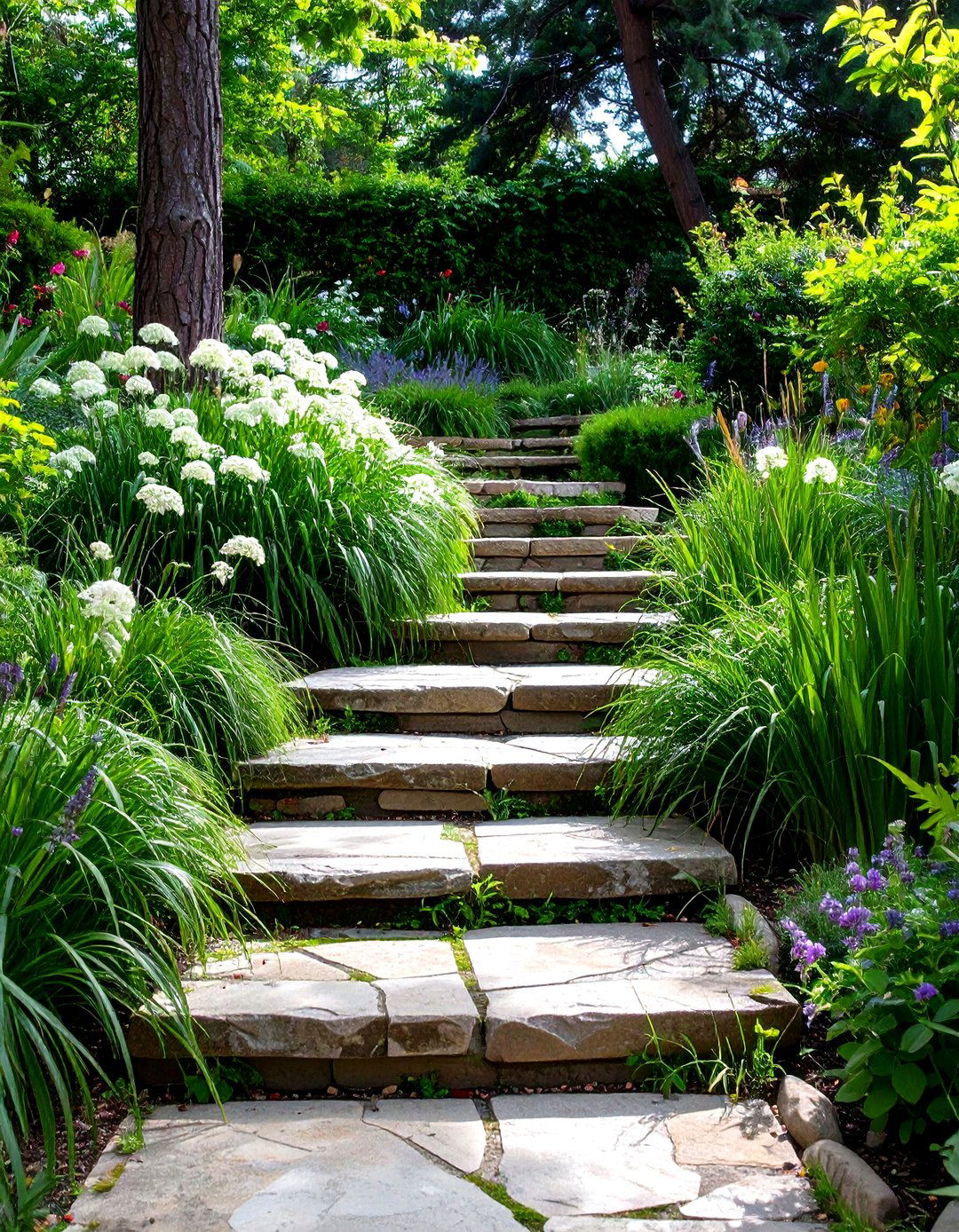
Where a site requires bigger height transitions, stack broad flagstone treads in gentle arcs to form a cascading walkway. Each riser should not exceed a 6-inch height for comfort; deeper 18-inch treads invite pause and photo moments. Stagger stones so joints never align, locking pieces like masonry courses for stability. Back each tread with compacted road base and set hidden steel pins through drill holes into sub-soil for earthquake resistance on steep terrain. Plant dwarf mondo grass between steps to knit structures and suppress weeds, watering until roots establish. The stair-like sequence turns challenging slopes into majestic focal stairs. Reddit YouTube
17. Built-In Seating Niches Along a Winding Walkway
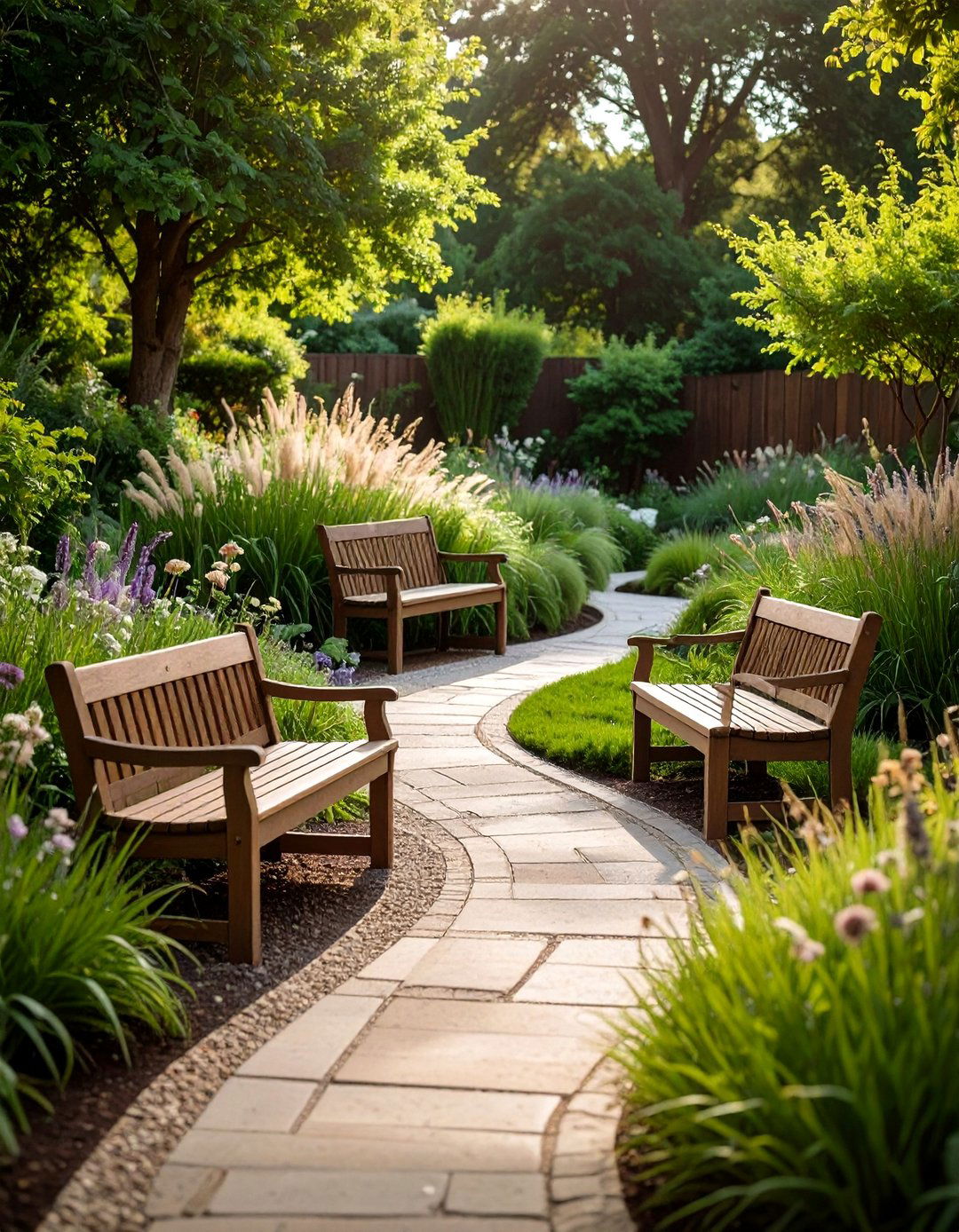
Design a curved walkway to widen periodically into semicircular alcoves fitted with stone benches. These lay-bys encourage lingering and create natural gathering spots without blocking main flow. Use the same paver pattern for continuity, but shift color bands or add radial soldier courses to signal the pause visually. Back the bench with tall ornamental grasses that sway overhead, adding movement and soft rustle. Low masonry seat walls double as raised planters for kitchen herbs. Lighting beneath bench lips ensures tripping hazards stay visible after dark while preserving stargazing ambiance along narrower segments. Lost At E Minor
18. Water-Feature-Hugging Curved Walkway for Reflective Views
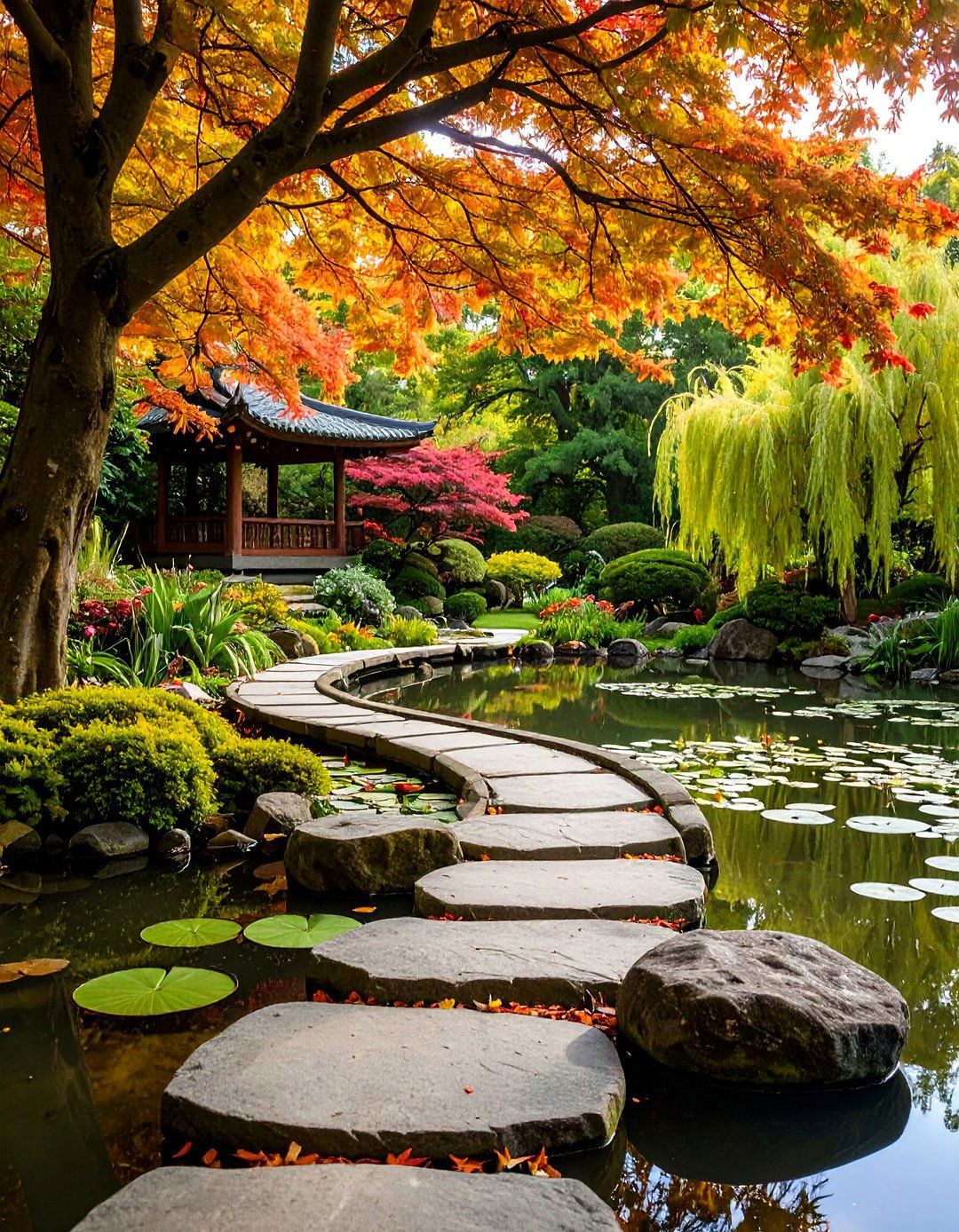
Pairing a gently bending walkway beside a linear rill, koi pond, or naturalized brook creates dynamic mirror images of passing clouds and night lighting. Set path elevation two inches above water edge to keep toes dry but allow lily fragrances to drift across. Use slip-resistant stone like flamed basalt, and cantilever a few slabs slightly over water for playful foot-dangles. Strategic curves widen at viewing platforms where a sculptural fountain or weeping maple becomes focal art. Foot traffic follows the water’s music, turning an ordinary transit route into a multisensory retreat that cools microclimates on hot afternoons.
19. Modern Steel-Edged Gravel Sweep for Low-Maintenance Lines
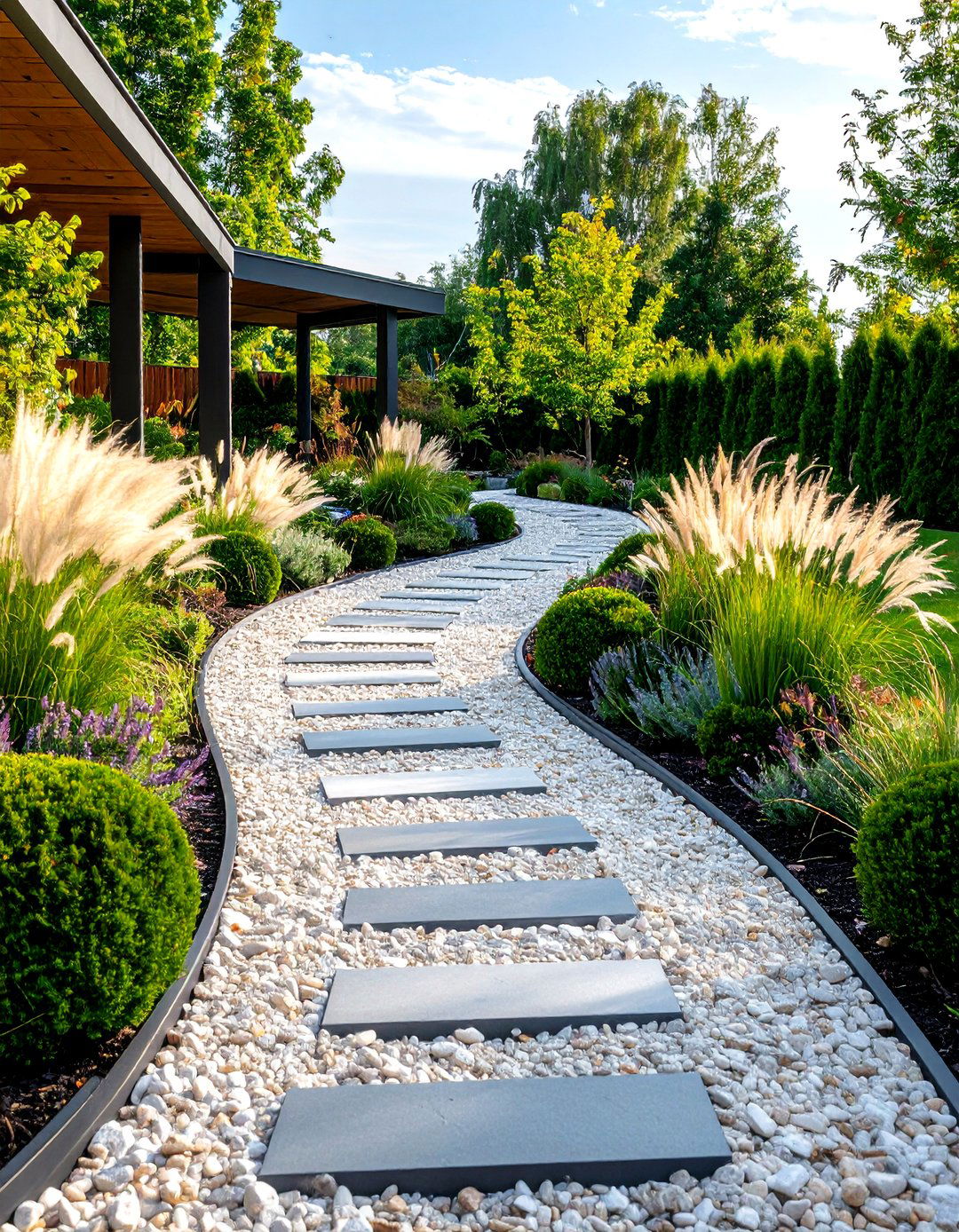
Slim weathering-steel edging crisply defines a pale limestone chip walkway that arcs through minimalist plantings of boxwood domes and feather grass. The 4-inch edging stakes drive easily into curves, holding shape for decades as the steel patinas to warm orange. Because gravel sits proud just ½-inch above adjoining soil, mowing and blower maintenance stay simple. Top up aggregate annually to replace windblown dust and keep surfaces even. The interplay of hard rusted metal, soft grasses, and punctuating evergreens delivers contemporary sculpture-garden vibes without requiring pour-in-place concrete or weekly sweeping.
20. Seasonal-Color Curved Walkway That Transforms Year-Round
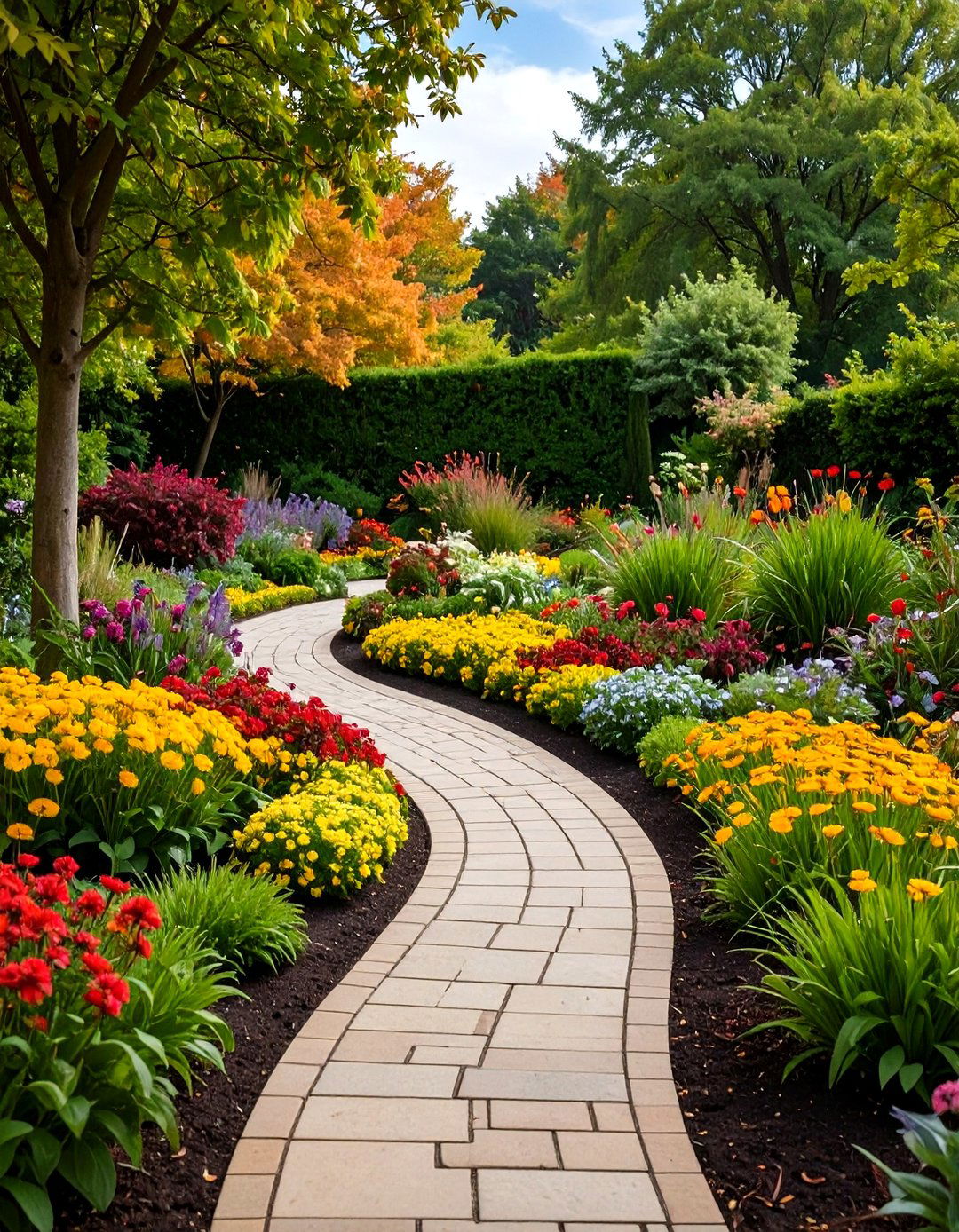
For homeowners who crave constant novelty, flank a sinuous walkway with plants chosen for sequential seasonal drama: spring bulbs, summer perennials, autumn foliage shrubs, and winter-stem dogwoods. Coordinate paver tint—cool gray or warm buff—to complement changing hues so the path feels freshly designed each quarter. Install irrigation zones by seasonal group for efficient water use, and mulch annually with compost to feed heavy-blooming sections. Low-profile uplights with interchangeable lens caps let you dial color temperature to enhance each season’s palette at night. The evolving corridor rewards daily strolls and anchors year-round curb appeal without major redesign. Lost At E Minor
Conclusion:
A thoughtfully curved walkway is more than a connector; it’s a choreographed experience that bridges function with sensory delight. Whether you favor rustic flagstone, eco-friendly gravel, or modern concrete, the gentle bend invites slower rhythms, reveals garden vignettes bit by bit, and helps hardscape merge seamlessly into nature. By pairing material strategy with lighting, planting, drainage, and grade solutions, each of these twenty ideas can be mixed-and-matched to suit climate, budget, and personal style. Embrace the arc, and your garden’s daily passage will become a journey worth savoring in every season. Lost At E Minor


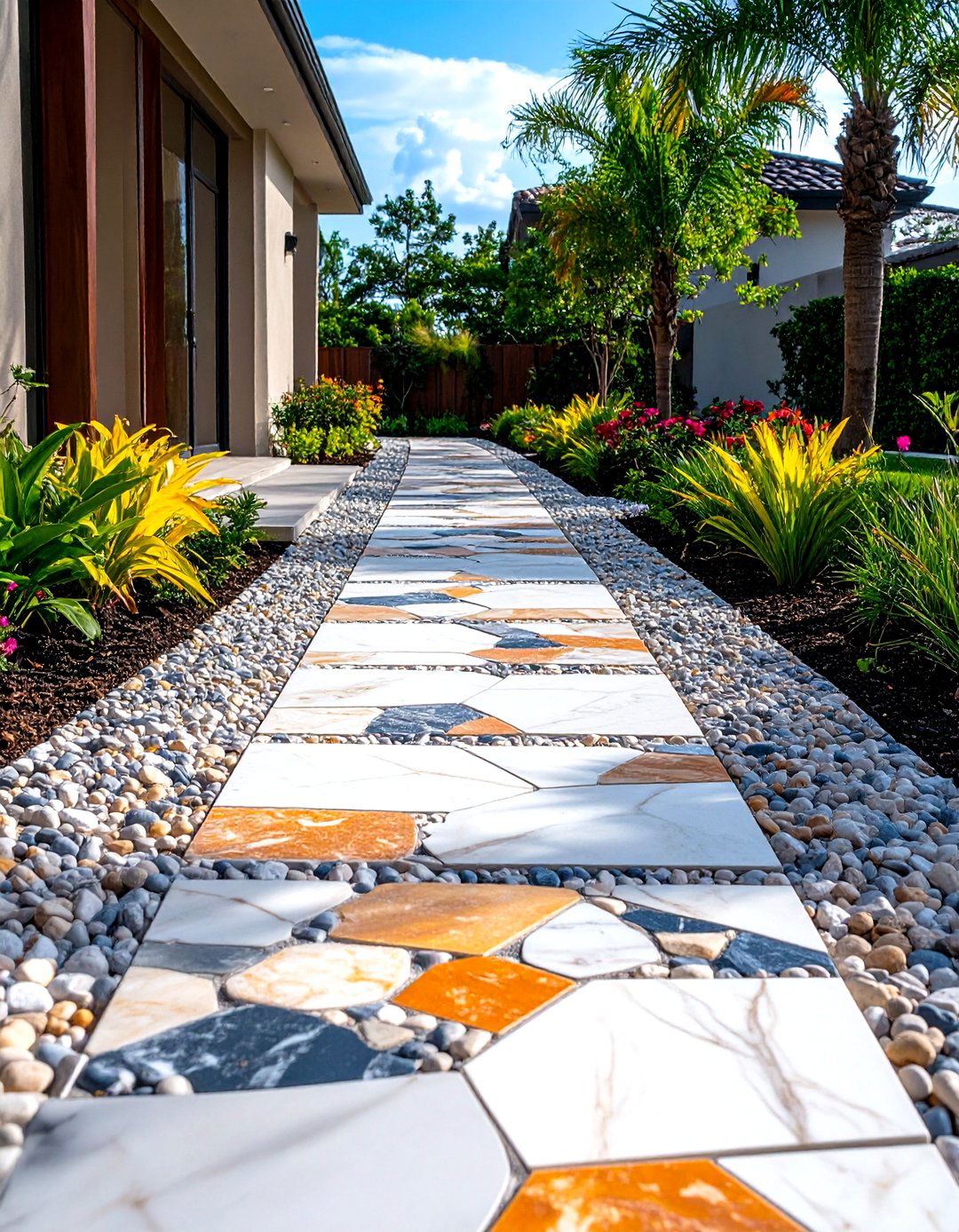
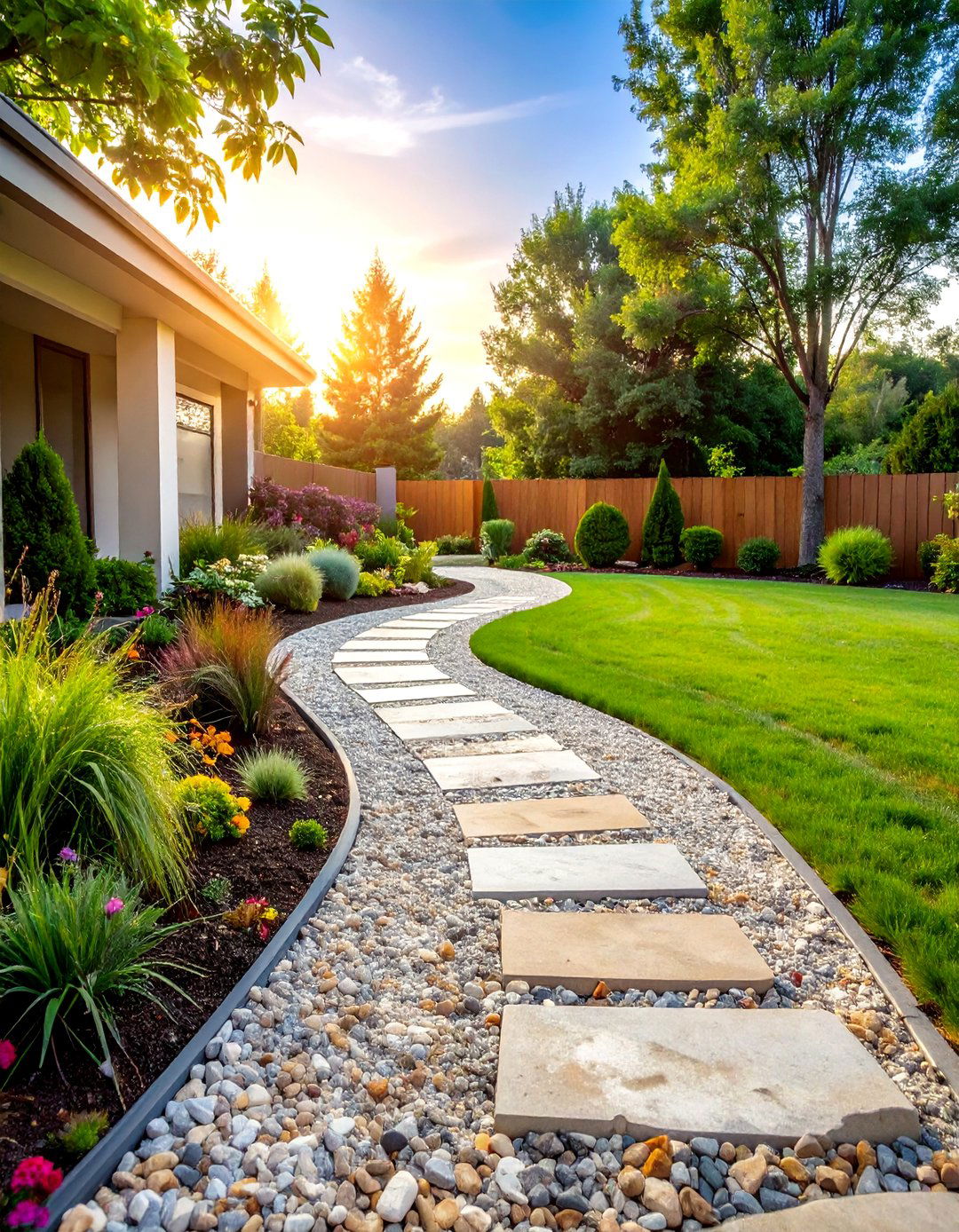


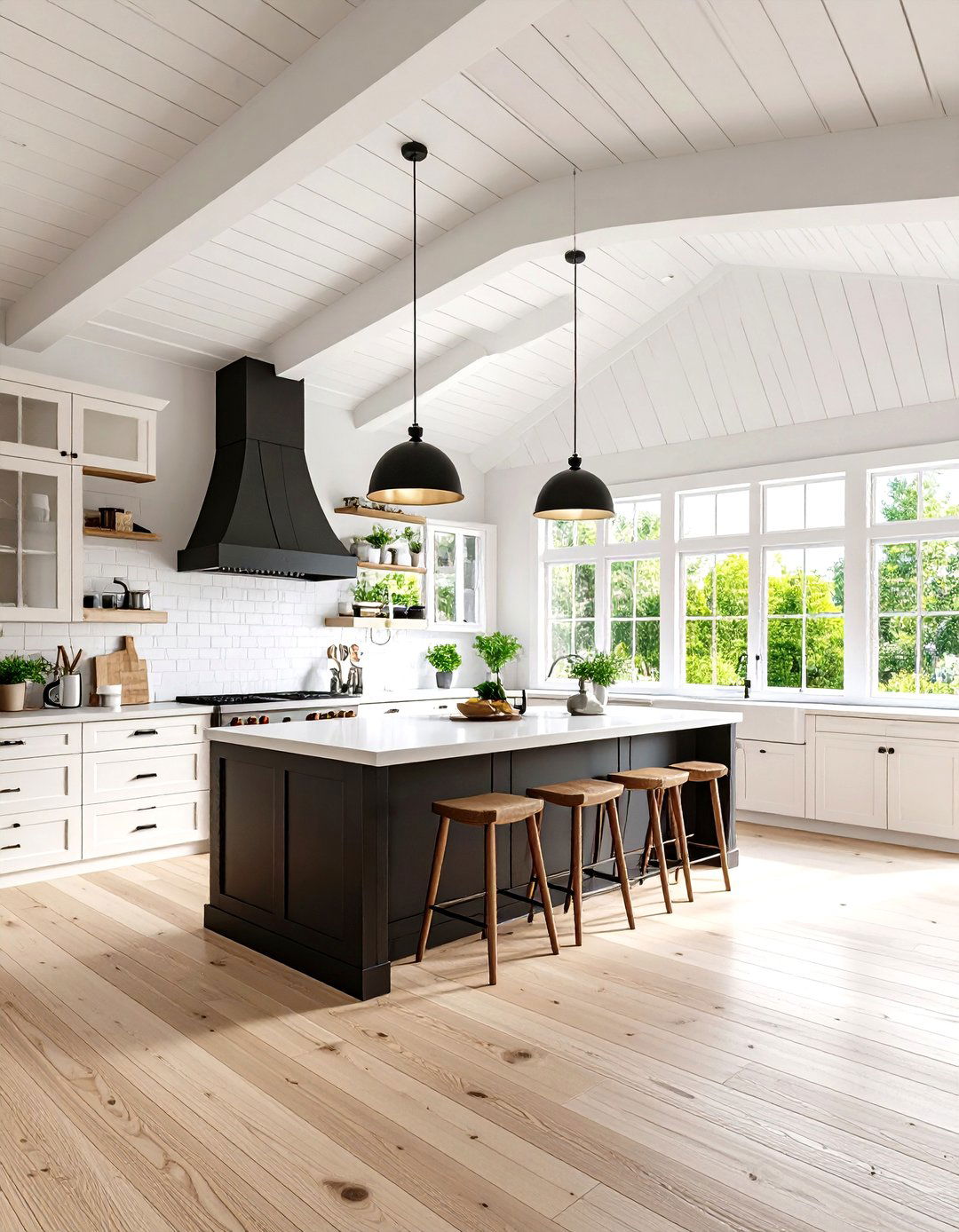


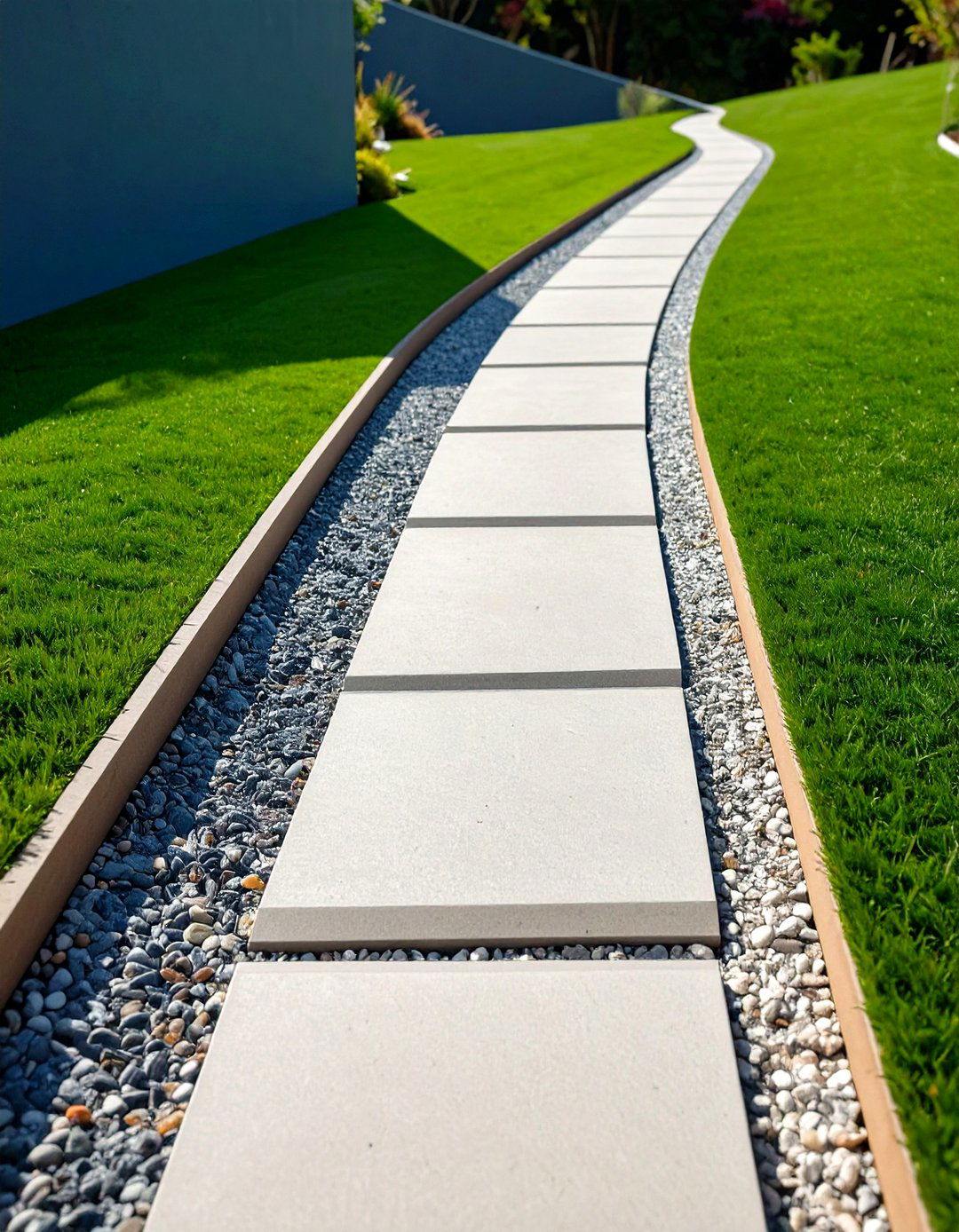


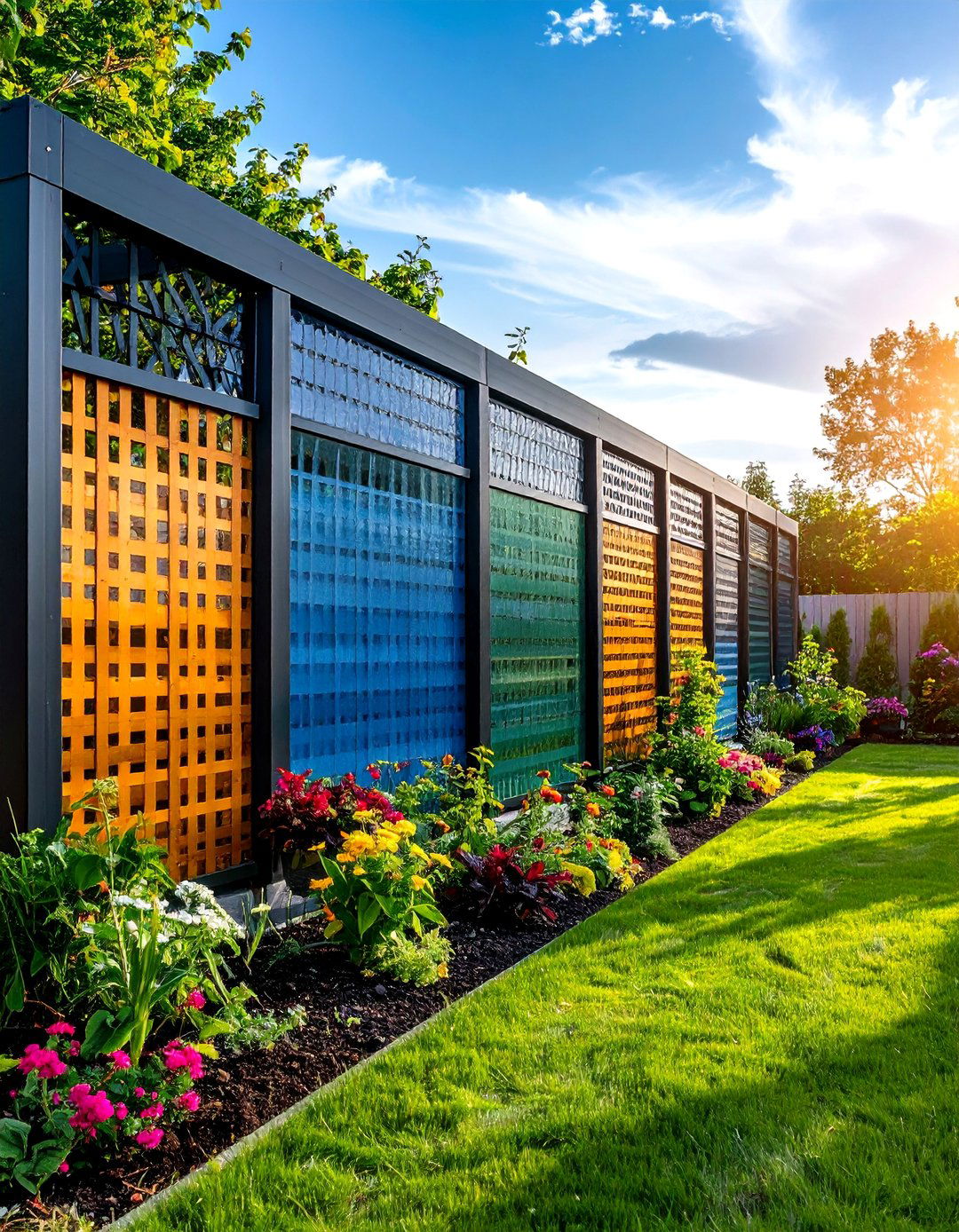
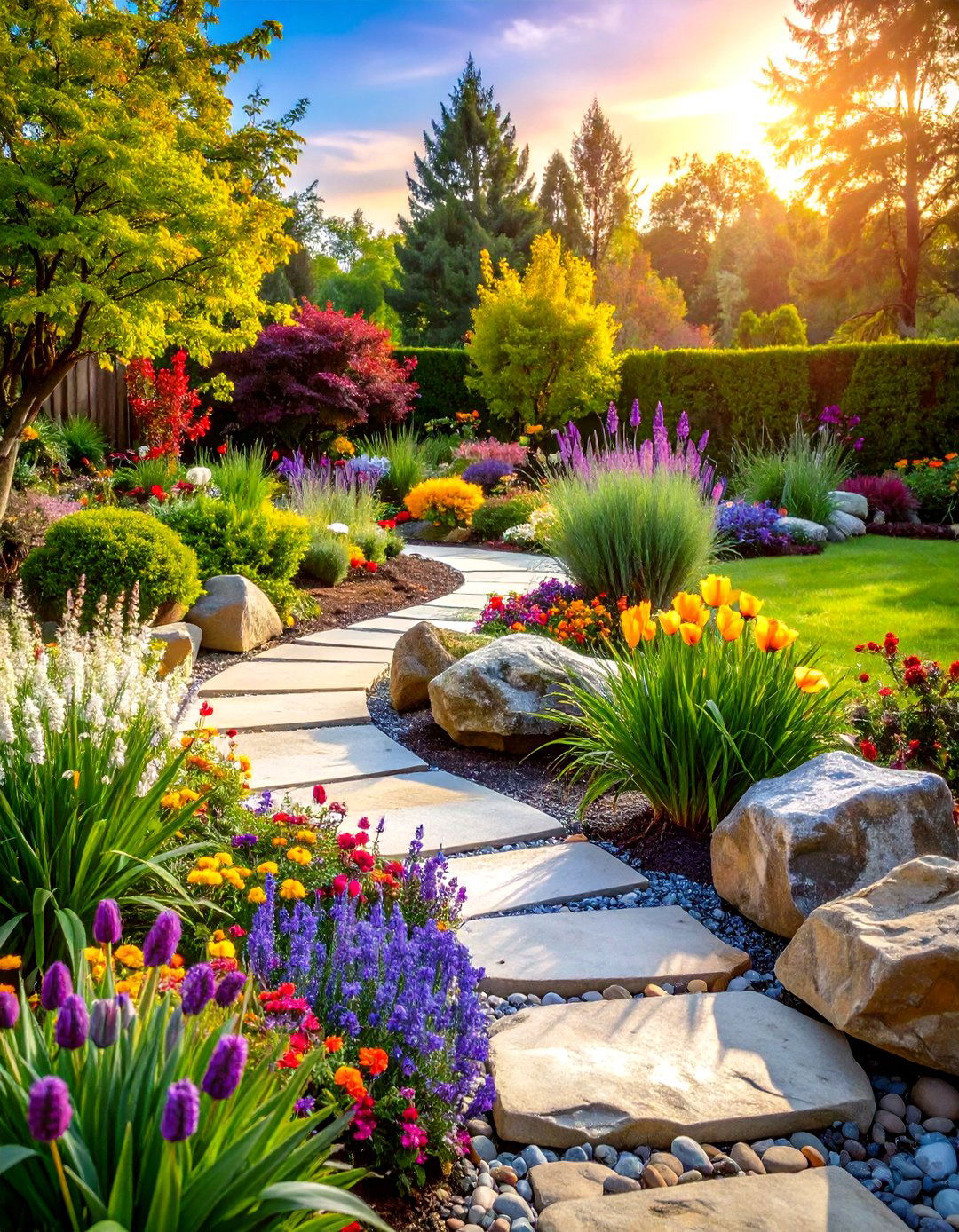
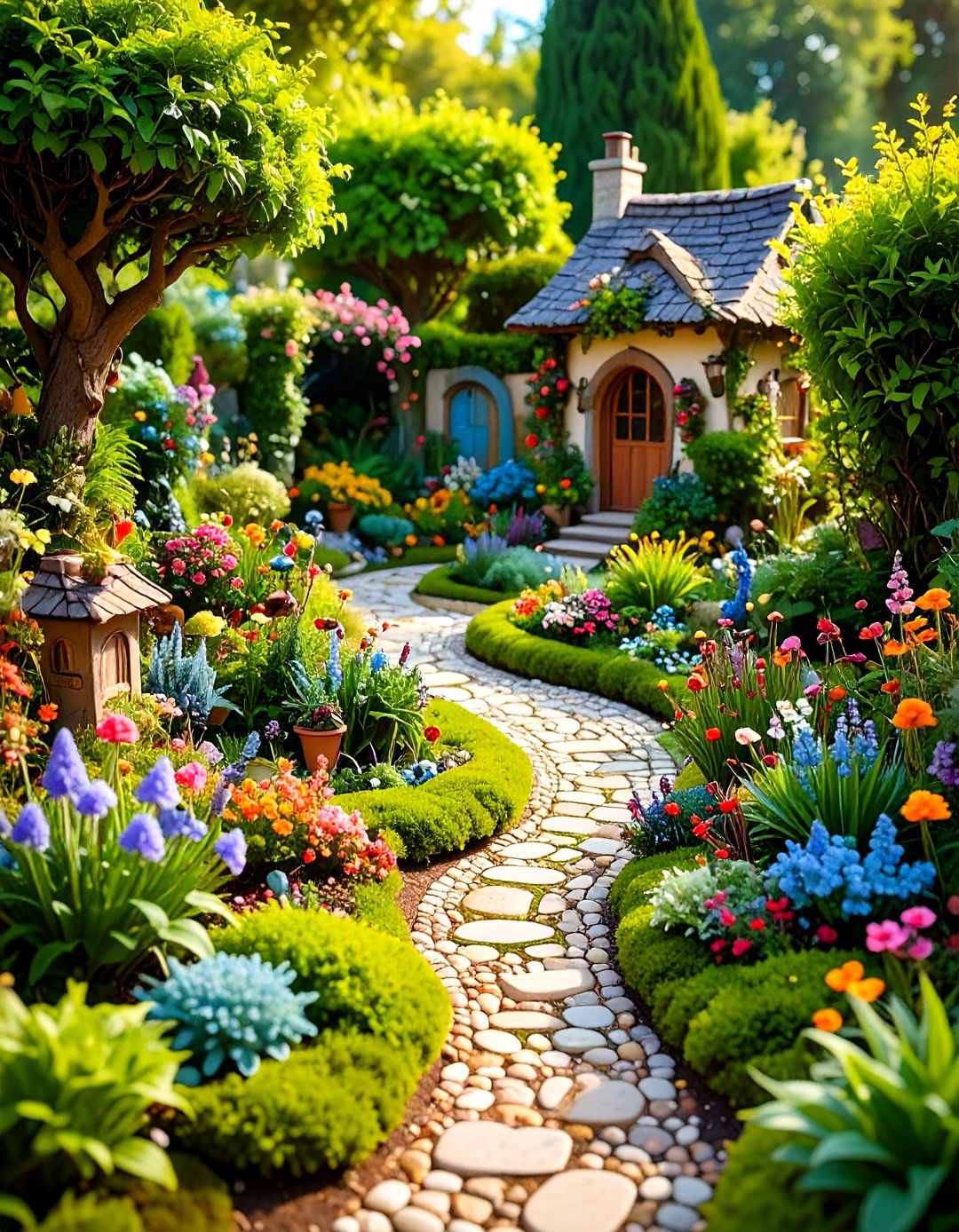

Leave a Reply